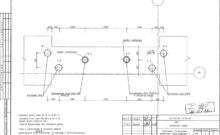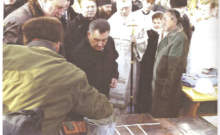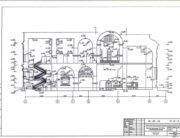Second half of the 14th century repair work on the restoration of the Church of the Assumption and other monastic structures are observed. Under the auspices of the Grand Duchy of Lithuania, life is being restored in Kiev and the Pechersk Monastery.
1516 Recreation of the Assumption Cathedral at the expense of Konstantin Ostrog (1460-1537) – the volume of the John-Theological side-chapel is primurovuyuschy to the southeast corner of the church; instead of the iconostasis that burned down in 1482, a new one was made.
1559-1566 Significant repair work on the Assumption Cathedral were in Archimandrite Hilarion Pesochinsky.
1599-1624 The residence time of the Archimandrite of the Caves Monastery of Yelisey Pletenetsky was distinguished by significant repair and construction and finishing works at the Assumption Cathedral, “… he strangely updated … the Pechersk monastery and perfectly decorated its cathedral church …”. “Dying, he rests outside the church in this chapel, which during his life made … this church (Ouspensky) operated on from great damage, endowed with decent vessels.”
1623 The first authentic iconographic image of the Assumption Cathedral on the title page “Conversations of John Chrysostom for the 14 Epistles of the Apostle Paul” in the publication of the Laurus Printing House.
1627-1628 The parish of Pechersk on the archimandry of Peter the Grave, which made a great contribution to the development of the main shrine of the Kiev-Pechersk Lavra – the Assumption Cathedral.
1638 Images of the Assumption Cathedral on the engraving plan of the Kiev-Pechersk Monastery in the book of the Lavra cathedral monk Athanasius Kalnogoysky “Teraturgim”. In general, the image of the cathedral is a supplement to the “architectural image of the temple” depicted in engraving in 1623.
1643-1644 The stay of the “tinsel” of Akim Evtyakhnev, who produced the gold leaf, 10,000 gold letters and Basma icons, confirm the scale of the reorganization of the cathedral. These changes in the first place should include the appearance of chapters and resizing extensions (aisles), as well as decorative decoration of the interior and facades of buildings.
1651 A drawing by the Dutch artist Abraham van Westerfeld captures the state of the Assumption Cathedral for this period from the southeast side. According to this, the construction of the cathedral has undergone significant changes compared with its appearance at the beginning of the 17th century. But at the same time, the planning structure changed to a lesser extent. According to the picture, the two western parts of the southern facade have a separate covering, and the central one, keeping the curve of the gauge, has a gable roof. The same principle underlies the eastern facade of the central nave. Buttresses on the south facade have a clear contour, akin to the image on engraving in 1623, except for the south. – Western (angular), which is depicted with a cross. There are two types of baths, of which, according to Figure 6, with world domes, and 3 are deaf, arranged on the pediments of the central areas of the southern, northern and eastern facades. Such an image has significant discrepancies with more reliable sources of this period and, according to some researchers, is related to late rearrangements.
1653 Description of the cathedral, Pavel Alepsky left after his wanderings, belongs to the most reliable sources and gives a complete characteristic of the architectural image of the church in the middle of the XVII century. The construction is brick, has high arches and nine high domes with gilded crosses. Clear parameters of the building volume are given, all entrance doors, windows and the character of the painting and interior decoration are listed. The description mentions buttresses on the facades and are characteristic, already known to us from early sources, of the extension. The nature of the gables on the facades is noted. The interior is characterized by the great beauty of all its elements of interior “decoration.”



















